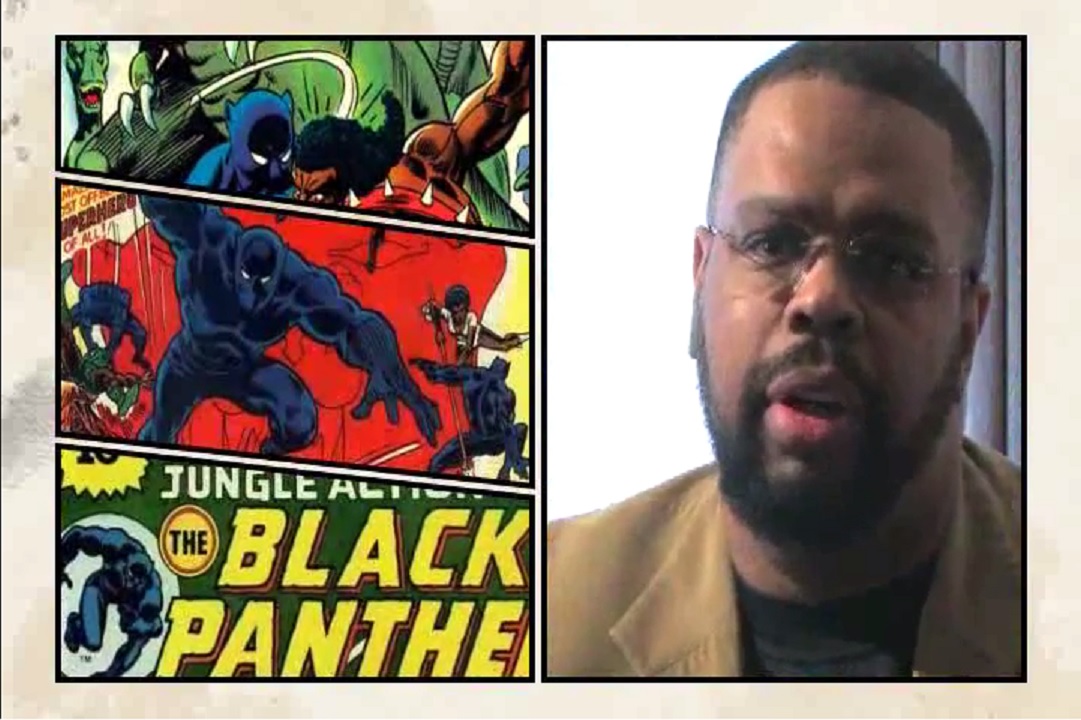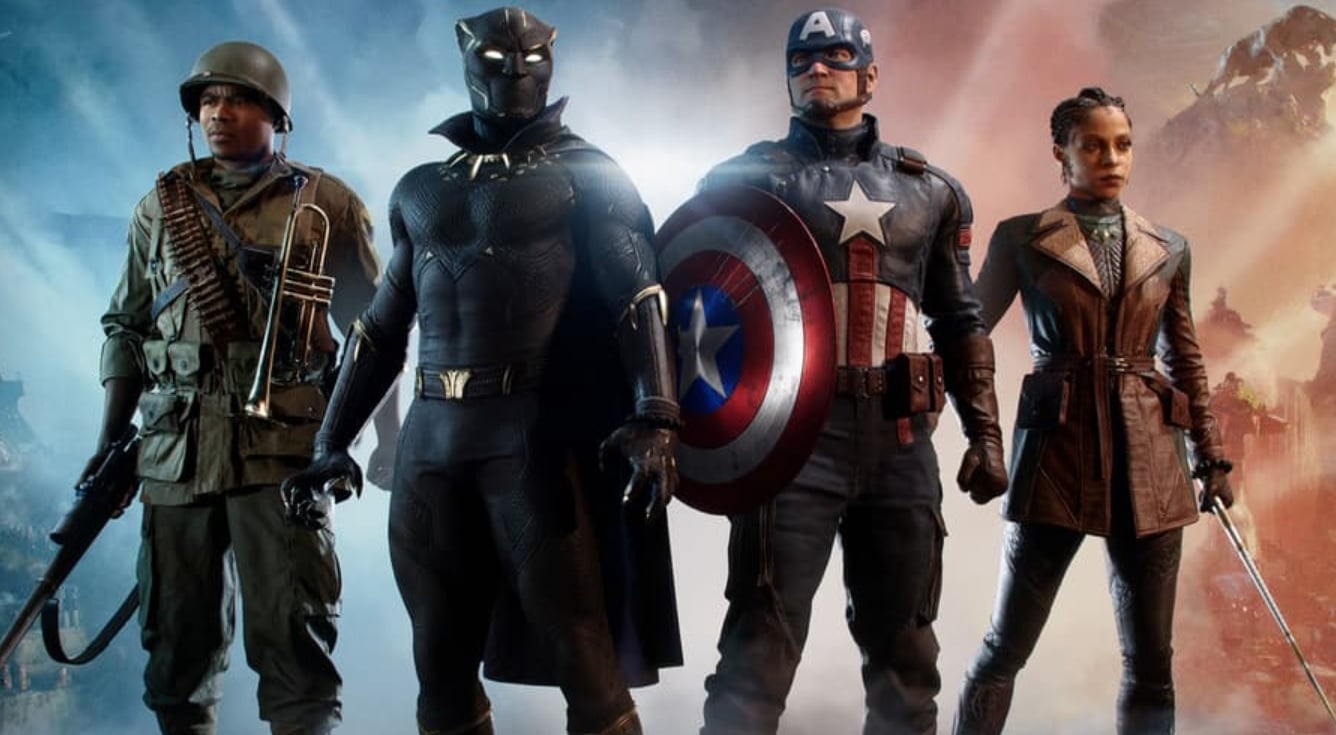I make no secret of the tremendous respect and admiration I have for the life and work of the late/great writer Dwayne McDuffie (in case the constant references in my past Beat articles weren’t enough of a clue). Despite having an award in his name, it always frustrated me that each year since McDuffie’s tragic passing in 2011 there wasn’t ever a major celebration among the comics industry on the February 21st anniversary of the day he passed (which incidentally was the day after his 49th birthday), except perhaps a generic mention with other black creators as part of Black History Month.
It’s not a huge secret that McDuffie wasn’t afforded the love from the comics industry that he owed, so as a fan I always believed it my duty to rectify this justice. Not too long ago his widow entrusted me with overseeing the social media aspect of preserving McDuffie’s legacy, but as a contributor to the Beat I felt a deep need to use this larger platform to honor him more than I could before.
Hence, what I’m calling Dwayne McDuffie Week. A daily column from February 15th-February 21st to remember the achievements of Dwayne McDuffie. While I originally intended for a 2 day celebration on February 20th/21st (the anniversary of McDuffie’s birth and passing), but given the major milestone with the Black Panther film release coinciding closely, I didn’t think two days would do enough justice.
That said, on this first day with many readers likely seeing Black Panther early screenings tonight or this weekend (assuming tickets at ANY showtimes are still available given the massive box office predictions), it seems appropriate to begin the first day to showcase what the Black Panther character meant to Dwayne. Below is a reprint of an article McDuffie wrote that was featured as the afterword in the Marvel Masterworks: Black Panther collection of the phenomenal “Panther’s Rage” storyline . The writer Don McGregor was so moved by McDuffie’s words that it brought tears to his eyes.
Moreover, it’s the source of the slogan of the Dwayne McDuffie Award, “from invisible to inevitable.”
Sometime during the summer of 1973, I was in my backyard pretending to be Dr. J., an endeavor requiring great imagination on my part, as I was too small to palm a basketball, much less dunk one. My best friend, Alan Tumpkin, interrupted my pathetic fantasies of athletic glory with important news from the real world.
“The Hulk is gonna fight Thor. It’s supposed to be out already.”
If Alan said so, it must be true. He knew more about comic books than anybody in the whole neighborhood. Even though my interest in the subject was, at the time, a good deal less fanatical than Alan’s, this was definitely worth checking out. Much of our rapidly-dwindling summer vacation had been spent in heated arguments over who would emerge victorious in such a contest. I was quite certain that the Incredible Hulk would have no problem beating up a little guy who dresses in a cape and wears feathers in his hat. Alan however favored Thor, citing the Asgardian’s mighty Uru hammer and mystical control over the weather as the likely decisive factors. Maybe so, but then, Alan also preferred Joe Frazier to Muhammad Ali.
The definitive answer to our debate was suddenly at hand. Only one obstacle remained. Lindsey Drugs, the “good comic store,” was over three miles from my house, and I was expressly forbidden from riding my bike in the street. Nevertheless, I concocted a clever story to cover my illicit tracks, “I’m going over to Alan’s, okay?”
Mom went for it.
Alan and I hopped on our bikes and made the long ride. We ran into the drug store and scanned all three comic racks. The Hulk vs. Thor comic was nowhere to be found. Alan consoled himself with a bag of “Gold Rush” bubble gum, which was pretty cool, because the gum looked like little gold nuggets, and it came in a cloth sack you could use to keep marbles and stuff in after you ate all the gum. I had twenty cents burning a hole in my pocket and was determined to buy a comic book. As it turned out, I’m very glad I did.
The comic I settled on was Jungle Action #6. It featured a super hero I’d never heard of called the Black Panther, but then, I’d never heard of the Black Panther political party either. The questionable taste of a black character being the lead in a book called Jungle Action escaped me completely. What didn’t escape me was the dignity of the characters inside. I was instantly and hopelessly hooked.
The Panther wasn’t the first black character I’d seen in comics. Blacks had already appeared in crowd scenes and even occasionally as supporting characters (although he was new to me, the Panther himself first appeared in The Fantastic Four). There was even one black character who starred in his own monthly comic. Marvel’s Luke Cage, Hero for Hire had been running for over a year when I first discovered Jungle Action. But I never connected with Cage, the bastard child of a 10,000 blaxpoitation movies, a super-strong “angry black man” who wore chains by choice, didn’t seem particularly bright, and spoke in a bizarre version of street slang that didn’t remotely resemble the speech of any black people I knew. Spider-Man made sense to me, Cage? What can I say? I just couldn’t relate.
In those days, when black characters in comics weren’t busy being angry, they appeared either as faithful sidekicks, or worse, helpless victims who begged white super-heroes to rescue them. “How come you never did nothing for the Back skins, Mr. Green Lantern?” And this was actually considered progress. The Black Panther was nobody’s sidekick, and if there was any rescuing to do, he’d take care of it himself, thank you. Moreover, the Black Panther was the king of a mythical African country, where black people were visible in every position in society, soldier, doctor, philosopher, street sweeper, ambassador— suddenly everything was possible. Before my astonished eyes, in the space of 15 pages, black people moved from invisible to inevitable.
I’ve spoken ad nauseam about the important of multiculturalism in fiction, as in life. I’ve preached about the sense of validation a child feels when they see their image reflected heroically in mass media. That particular summer afternoon, reading about the dastardly (but nuanced) Erik Killmonger’s villainous plot to usurp the Black Panther’s rightful throne, was precisely when I first felt that sense of validation. I realized that these stories could be about me, that I could be a hero, too. Years later, writing in my own comic, I’d describe that wonderful feeling as “the sudden possibility of flight.” The creation of Milestone Comics was, among many other things, an attempt to pass that feeling along. It was about gaining the high round, about gaining a perspective that allows you to see the many possibilities open to you. That issue of Jungle Action single-handledly revealed to me that there were new heights to reach, new vistas to view. It also, not incidentally, entertained the hell out of me.
Thank you, Don McGregor.
What I didn’t know at the time was that terrific comic I brought (and as it turned out, paid for; my mother wasn’t actually fooled by my “going over to Alan’s” ruse. When I returned from the store, she put me on a “no comics” punishment for an agonizing two weeks) was only the beginning of an unprecedented multi-part epic called “The Panther’s Rage.”
For 13 bimonthly issues, over the course of nearly three years (yeah, I know. Let’s just say that Marvel wasn’t exactly a stickler for shipping dates back in the Seventies), aided and abetted by a number of exceptionally talented artists, including the late, great Billy Graham, “The Panther’s Rage” was everything a super-hero comic should be. This overlooked and underrated classic is arguably the most tightly-written multi-part super-hero epic ever. You just read it, so you know I’m not exaggerating when I say that it’s damn-near flawless. Every issue, every scene, is a functional, necessary part of the whole. Okay, now go back and read any individual issue. You’ll find, in seamlessly integrated words and pictures; clearly introduced characters and situations; a concise (sometimes even transparent) recap; beautifully developed character relationships; at least one cool new villain; a stunning action set piece to test our hero’s skills and resolve; and a story that is always moving forward toward a definite and satisfying conclusion. That’s what we should all be delivering, every month. Don and company did it in only a relative handful of story pages per issue. Compare this to the bloated, empty, ill-planned “story arcs” you see in many of today’s comics. Six 22-page issues to tell about two issue’s wroth of story seem to be about par. Ah, but now I’m just bitching.
I followed Don’s work and became a hard-core fan, first of the Panther, then Marvel, and finally of the medium. Meanwhile, Don McGregor spent the next forty years continually challenging the limits of that medium by producing gems including Killraven, Detectives Inc., Sabre, Ragamuffins, Nathaniel Dusk, Zorro and Lady Rawhide. Along the way, he returned to lend his magic to the Black Panther twice more, producing the classic stories “Panther’s Quest,” and “Panther’s Prey.” Perhaps we’ll see them collected in a Marvel Masterworks soon?
Don McGregor is a writer who continues to this day to challenge and delight us, while validating our essential humanity. Like his work, he’s a priceles treasure.
Dwayne McDuffie is a Humanitas Award-winning creator of Static Shock, a television writer and a producer, and a co-founder of the multicultural comic book company, Milestone Media. In the fall of 1973, he and Alan finally got their hands on a copy of the Hulk vs. Thor comic. The fight was a lousy tie.








Milestone has to come back one of these days. I mean, Valiant came back from the 90s.
This is the second time I’ve caught an article here like this, with excerpts of McDuffy – an awesome creator. Keep ’em comin’ (all week, Yay!
Comments are closed.